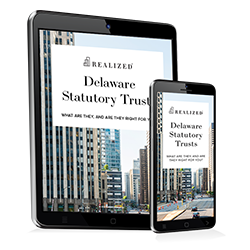Secondary Markets for Passive Real Estate Interests

For investors immersed in the world of commercial real estate, the allure of passive ownership can be complemented by an often elusive but critical component: liquidity. When capital is tied up in investments like Delaware Statutory Trusts (DSTs) or non-traded Real Estate Investment Trusts (REITs), the ability to sell or reposition assets can be constrained without accessible secondary markets. This challenge underscores a burgeoning interest in secondary markets for passive real estate interests—a development that mirrors the sophisticated financial maneuvers of Wall Street but is grounded firmly in real estate strategy.
Build-to-Rent Funds: A Passive Path to SFR Exposure

In the ever-evolving landscape of real estate investing, Build-to-Rent (BTR) funds are emerging as a compelling option for investors seeking exposure to the single-family rental (SFR) market without the hands-on demands of active property management. When you explore the possibilities of BTR funds, you're essentially looking at a way to engage in real estate investing with the ease and passive nature akin to that of purchasing stocks or bonds.
Co-Investment Sidecars: What They Are and How They Differ from Main Real Estate Funds

Real estate investing offers a plethora of pathways, each with unique structures and investment strategies tailored for different risk appetites and capital contributions. Among these alternatives, co-investment sidecars emerge as a distinctive vehicle, sharing the stage with main real estate funds but differing significantly in purpose and execution. In the financial services industry, understanding these nuances is crucial, particularly for investment property owners looking to optimize their portfolios.
Interval Funds for Real Estate Exposure: How Subscriptions and Tenders Work

For investment property owners, gaining real estate exposure while seeking liquidity and risk management can be a complex endeavor. Enter interval funds, an increasingly popular investment vehicle that offers a balance between accessibility and a sophisticated investment strategy. Designed for those seeking periodic liquidity in an often illiquid market, interval funds blend attributes of open-end and closed-end funds, particularly in how investors can buy and sell shares.
How Non-Traded NAV REITs Handle Redemptions and Pricing

Investing in non-traded NAV REITs (Net Asset Value Real Estate Investment Trusts) offers unique opportunities and distinct challenges when it comes to liquidity and pricing. For investment property owners exploring diversification through non-traded NAV REITs, understanding the mechanisms for redemptions and how pricing is handled is paramount.
Using Risk Budgets for Passive Real Estate

As any seasoned investor will tell you, the art of investment isn’t just about maximizing returns – it’s about managing risk. For property owners transitioning from active management to passive real estate investments, this is a lesson well learned on both Wall Street and Main Street. Utilizing a risk budget approach in passive real estate can be key to safeguarding one's portfolio against volatile market shifts while ensuring consistent growth and income.
Income Targeting vs. Total Return in Passive Property Vehicles

In the world of real estate investment, particularly when dealing with passive property vehicles such as Real Estate Investment Trusts (REITs) and Delaware Statutory Trusts (DSTs), investors must often choose between two distinct strategies: income targeting and total return. Each approach offers unique benefits and risks, suited to different investor goals and market conditions.
Inflation Linkage in Passive Real Estate

Inflation is a persistent concern for investors, particularly those with portfolios steeped in real estate. As prices of goods and services rise, purchasing power diminishes, posing risks to investments that do not appreciate alongside inflation. However, real estate, especially when managed passively, can offer a robust counterbalance to inflationary pressures, making it an appealing choice for savvy property owners.
The Passive Real Estate Spectrum: From Traded REITs to DSTs and Interval Funds

For investment property owners seeking a hassle-free way to maintain their real estate exposure, passive real estate investments offer an appealing array of options. Among the most prominent choices are Real Estate Investment Trusts (REITs), Delaware Statutory Trusts (DSTs), and Interval Funds. These vehicles allow investors to participate in the real estate market without the day-to-day demands of property management.
Building a Passive Real Estate Sleeve: Allocation Models and Rebalancing Considerations

Real estate investment is a popular choice for those looking to build a robust, passive income stream. As with any investment strategy, a thoughtful approach to asset allocation and rebalancing is central to maximizing returns and mitigating risks. Here, we explore effective allocation models and the nuances of rebalancing for those looking to create a passive real estate sleeve.


